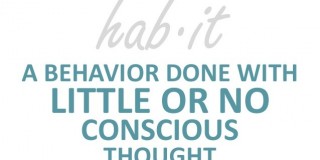Creating a product and writing good sales copy are not enough to convert visitors into customers. Your first task is to build trust. If they don’t trust you, they won’t buy from you – even if your offer is really good.
Let’s say you’re walking down the street and a guy you’ve never met comes up to you. “Wanna buy an iPad 2? 20 bucks and its yours!” He pulls it out and shows it to you. It works and everything. You know iPad2 is a good product and 20 bucks is a fantastic price.
Will you buy it? Probably not. You don’t trust him and have all kinds of suspicions. Had you met this guy before or at least knew of him, you’d be way more likely to buy it, right?
Here are 10 tips to build trust towards the product you’re selling (and yourself):
1. Do content marketing. Blog like your life depended on it. Send out regular newsletters to your list. Tweet.
Main point: prove that you’re a good guy/gal, you know what you’re talking about. Nothing builds trust like building a relationship. The best way to do this online is via content marketing and adding value.
Plus constantly updating your site shows its alive. It’s hard to trust dead sites.
2. Be transparent. The least trustworthy sites are anonymous. No email, phone number, social media contacts. No names, no pictures. Makes you think – what are they hiding? Is it that they don’t want to be found? They don’t want people to recognize them?
If you’re honest, be transparent. Publish your name and the names of your team members, along with photos of yourself. Contact details. People want to know they’re dealing with real people.
3. Testimonials. People are skeptical about what you say about yourself or your product. People mostly believe people like themselves (people with the same lifestyle, similar problems, demographics). Other kind of good testimonials is expert testimonials, but the expert needs to be somebody people know. Or at least from an institution people are familiar with.
The best kind of testimonials are video testimonials. They’re hard to fake. Second best: full name with a photo and some details about the client.
4. Social proof. Nobody wants to be the only idiot buying your product. When people don’t know what to do, they do what other people do. Let’s say you want to buy a new kitchen knife. You’ve narrowed it down to 2. One has 2324 (good) reviews, the other one has just 3. You will buy the one with more reviews.
So the more testimonials, the better. You can feature some more prominently, but add a link to hundreds. Blow them away with the sheer quantity. Mention the number of clients you have, the numbers of blog readers, newsletter subscribers or any other impressive number.
5. Avoid cheesy stock photos. No men in suits shaking hands, women laughing alone with salad or half-naked girls measuring each other’s waist.
The goal of photos it to depict people like your buyers. Nobody looks or acts like people on stock photos.
6. Articles about you on neutral publications. You say you rock, that’s one thing. If Mashable, TechCrunch, Inc or The New York Times do, that’s a whole new ballgame.
Try to get featured on as many 3rd-party sites as possible and link to those reviews, stories and articles.
7. Design! People judge the book by the cover. If your design is amateurish, cheesy (Ferraris and Skyscrapers) or was built before 2005, you are losing sales.
You like red, I like blue – that’s fine. I’m not talking about taste. But work with a pro designer to get a design that looks at least good enough. Good enough is good enough.
8. No hype, blinking banners nor popups. If your site looks like a Christmas tree, you need to change that.
Make sure the copy is hype-free, nothing blinks and just know that people hate all kinds of pop-ups. Don’t use them unless you want to annoy people.
9. Demonstrate results. You have a blender that blends everything, or so you say. How can I believe it? Blendtec demonstrated it loud and clear via videos (that went viral).
You have a product that helps people lose weight? Show me. Before and after pictures and videos, case studies. You have
10. Use trust marks. Take credit card payments? Prove me it’s safe (256-bit SSL encryption etc). Use The Verisign Seal or equivalent. Have people opt-in to your email list? Put a TRUSTe privacy seal on your site. Mindvalley boosted its sales by 15% by just adding a McAfee trust mark on their site.
Do these 10 things better and way more people will trust you.





I like your post… Can I ask you some question? Does future and benefits can build trust?